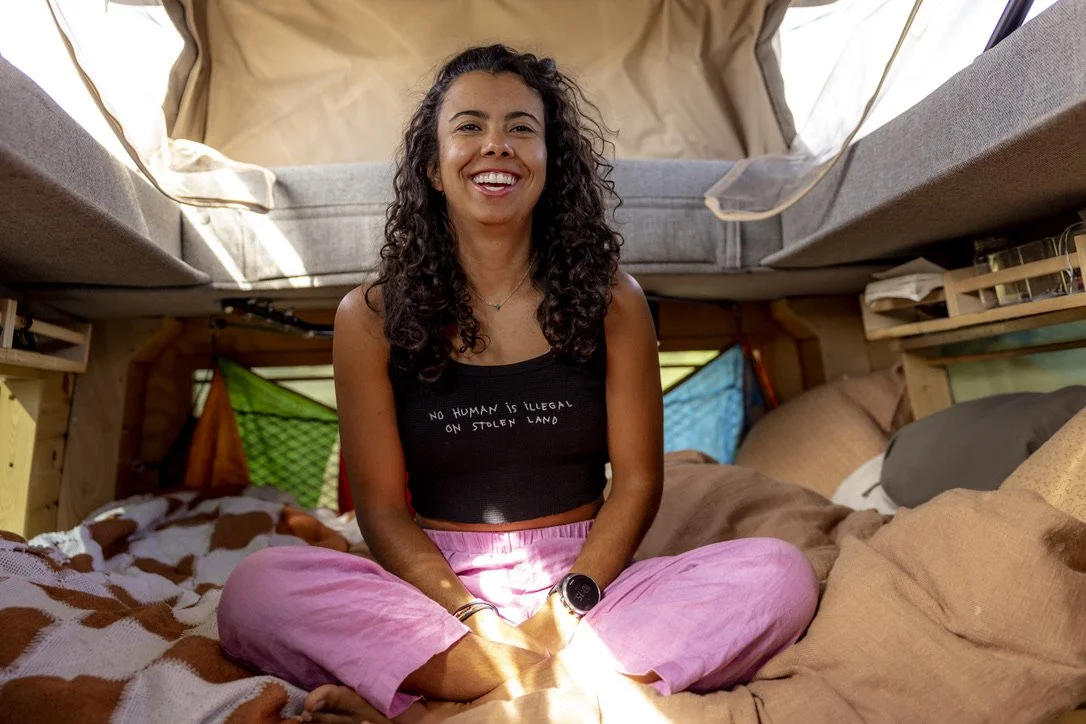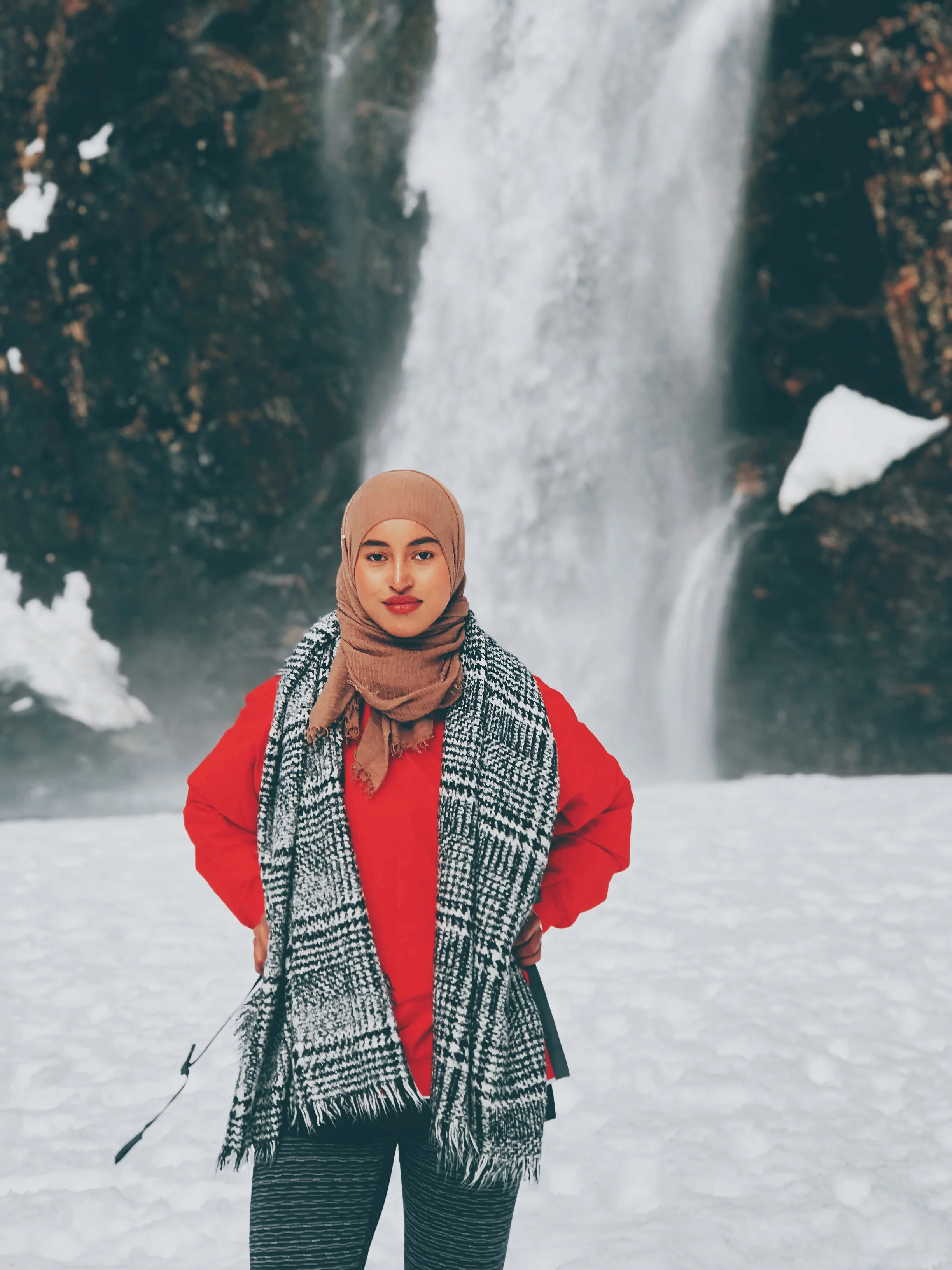The Cloud Forest Calls My Name: Reclaiming My Immigrant Identity
Riding up to the clouds and through the Colombian countryside.
Overlooking a lush green valley filled with coffee farms in Antioquia, Colombia.
My earliest memories in nature are from Colombia. I was born in the lush hillsides of central Colombia. All of the buildings were made of terracotta brick, providing a blur of ochre and emerald that I watched with curious eyes out of the car window. A sudden turn of events landed me in South Florida, where I spent a large part of my childhood. Although I was constantly around other Latinx people, I was shielded from them in a number of ways; I was never allowed to speak Spanglish, most of my friends were white, I adopted Eurocentric standards of beauty and success, and I was inserted into white spaces.
My parents adopted the American Dream and encouraged assimilation as a way to survive and succeed in the United States. This meant growing up without raíces—roots to home.
“I was never meant to be contained. I was never meant to be held within one pair of hands, one single country, or one identity.”
Standing on the summit of Disappointment Peak in Grand Teton National Park. The middle Teton is to my left.
I struggled to find a home within myself growing up. I was never American enough or Colombian enough. Once I was at a theme park with some friends who were talking about some American baseball movie. When I mentioned that I had not seen the movie, they looked at me incredulously and asked “What, are you not American?”. I would often come home crying because my skin was too dark, I had too much body hair, I didn’t pronounce words correctly. I became ashamed of speaking Spanish at home and ashamed of my mother’s accent. I became ashamed of my dark skin, my full lips, and my thick curly hair. I became ashamed of any identifier that made it easy for white kids to bully and other me.
When I would meet other Colombians or see relatives it was the same feeling in my stomach; I was an outsider and an impostor. I did not have a full vocabulary and became frustrated when I couldn’t find the Spanish words to express myself. I did not know the current music or the slang people my age were using. I didn’t like coffee and never learned how to dance. Because my ties to home were weakened by a large geographic distance, I felt like I could not truly represent my country or my people.
A rocky river in the Colombian rainforest, just outside of Medellín.
My Colombian identity also carries a lot of trauma. I grieve the grandparents I did not get a chance to know, and all of the life experiences I did not share with my family. I carry the grief passed down to me by my ancestors, a grief rooted in colonialism, that has erased parts of my story and identity.
Because of this difficult split in my identities and cultures, I always felt like there was no place I truly belonged. Growing up as an immigrant has made it difficult for me to take up space and value myself. This is due to internalized immigrant beliefs that I would never be enough. I was taught that my purpose was deeper than my own personal comfort. I still struggle to put myself first.
For this reason I became more and more comfortable with being an outsider, and found comfort and belonging in nature. Although the Colombian cloud forest is drastically different from the alpine tundra of the mountain West, both places welcomed me in the same ways.
When I walk through the forest I don’t have to worry about how I am presenting myself or if I am palatable enough for white people. When I am outdoors, every part of me is allowed to be visible and spoken for. Going outdoors feels radical because it is simultaneously centered on self preservation and connecting with my ancestors. The outdoors remains a place of healing for me, my ancestors, and my descendants.
As I grow into myself I am learning more and more that I cannot be contained by one single country or identity. My multitudes were never meant to be contained. Creating space for my multitudes and not letting myself be reduced to binaries is a radical act of resistance to colonization. Instead of feeling like I am not enough of either culture, I am embracing the idea that I am more than a single culture can contain.
“When I am outdoors, every part of me is allowed to be visible and spoken for.”
Sitting on the airy and exposed summit of Teewinot in Grand Teton National Park on Shoshone-Bannock, Eastern Shoshone and Tséstho’e (Cheyenne) land. The Grand Teton and Mount Owen are behind me.
As I write this I am sitting on my grandmother’s patio in Medellín. The sounds of the creek, Amazonian motmots, and white-footed tamarins are blended with the loud laughter and conversation of my four aunts downstairs. The warm sun bathes my skin, painting it a shade of café con leche darker so I blend in. The smells of coffee and fruit sit heavy in the humid air. My body remembers this place viscerally and feels at home here, just as it does on a granite, airy summit thousands of miles from here. I am learning to embrace this contradiction.
The revolution begins at home. For me, home is in the mountains. Whether I am on a solo trail run in the alpine or laughing with friends in a deep canyon, the outdoors is where I feel I can embrace all parts of myself. The mountains of Wyoming, the oceans of Mexico, and the rivers of Colombia see me as I am. Like me, these nonhuman beings contain multitudes that cannot be reduced or simplified. We must embrace and celebrate their complexity and diversity.




















Do you love the outdoors? Do you have a lot of outdoorsy friends? Are most of them White? Well, you might relate to the following experiences. Eugene Pak lays out ten things he wishes his outdoorsy White friends knew about him..